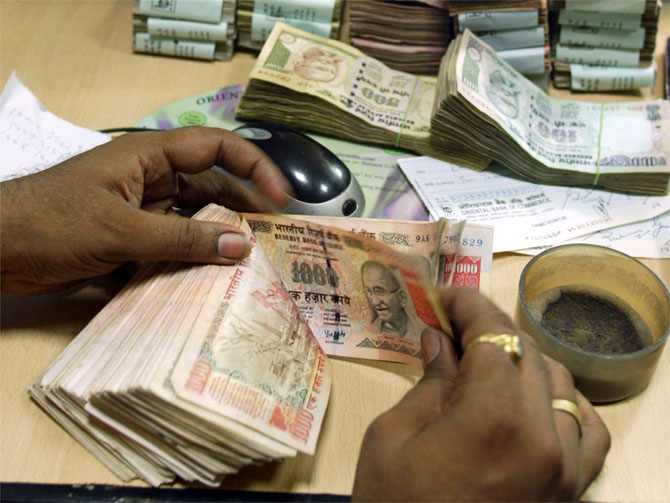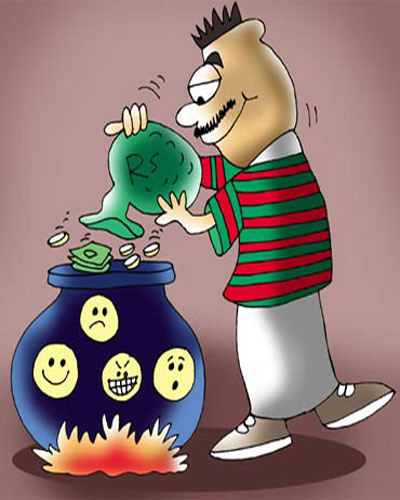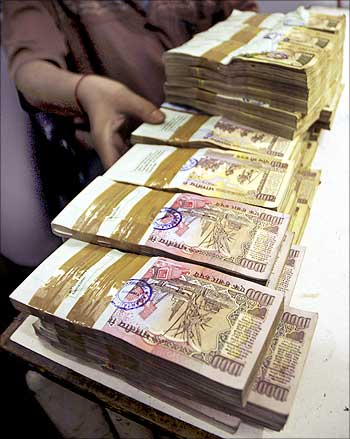
The recovery in the international markets has seen fund houses launching foreign feeder funds -- Religare Invesco Global Equity Fund, Franklin India Feeder-Franklin European Growth Fund, HSBC Managed Solutions.
PineBridge Investments has added an additional flavour to their international scheme -- a dollar systematic investment plan facility.
In simple terms, it allows you to invest in dollars rather than rupees.
Typically, an investor earmarks say, Rs 2,000-5,000 in a scheme a month.
In case of PineBridge India US Equity Standard Fund, the amount will have to be earmarked in dollar terms.
So, if the dollar was to appreciate or depreciate against the rupee, the monthly deduction will rise or fall, accordingly.
. . .

This is much like value-based schemes where based on the rising price-to-earnings multiplier, the amount deducted for the SIP rises or falls.
While the fund house is targeting investors who will have dollar expenses in the future -- child’s education or foreign travel.
The good part is that the dollar reference rate (Reserve Bank of India reference rate) used for deducting will be of the week preceding the investment date.
For instance, if you are investing on the May 15, the dollar rate considered will be of May 8. So, there will be some hedge available.
In the case of this SIP, fluctuations in the currency, much like the stock market volatility, will get balanced out over the long term.
. . .

At present, foreign funds accept SIPs in rupee terms, which they convert into dollar or other currencies for investment.
The rupee has become marginally stronger since January.
It stood at 61.80 a dollar on January 1 and today stands at 60.31.
While the investment amount in dollar terms shall remain constant through the investment tenure, the exchange rate and rupee movement shall determine the investment amount every month.
But Hemant Rustagi of Wiseinvest Advisors says it won't make much of a difference.
Say you invest Rs 6,000 today (that is, $100).
. . .

And, say the rupee falls to 40 a dollar next month.
You will then invest Rs 4,000.
Either way, you will buy the same amount of dollars.
However, you might fall short of the target corpus, if the rupee continues to be strong all through the investment period but that is unlikely.
Certified financial planner Malhar Majumder says those who want a hedge from currency risk but are ready to take equity risk will subscribe to this product.
Those investing in other international funds take both currency and equity risks. If the dollar SIP was invested in debt, it would have been comfortable.
Experts say investors should have a horizon of three to five years, because this is a risky product and the minimum investment amount is also high.
. . .

Also, this product invests in US equities which have been not returned too well year-to-date.
The Dow Jones has lost 0.25 per cent and Nasdaq has lost 1.75 per cent. In comparison, Europe's FTSE has returned 0.3 per cent, CAC has given 4.70 per cent and DAX has given 0.3 per cent.
Europe is still recovering and can offer higher returns.
But saving for dollar expenses need not happen in dollar terms.
You can do the same in rupee terms with other international funds.
If you think the rupee will depreciate you can invest more right from the start.
Also, the dollar-rupee conversion angle could confuse retail investors, says the fund manager.
The tax treatment to investments in this will also be treated as debt investments.
. . .